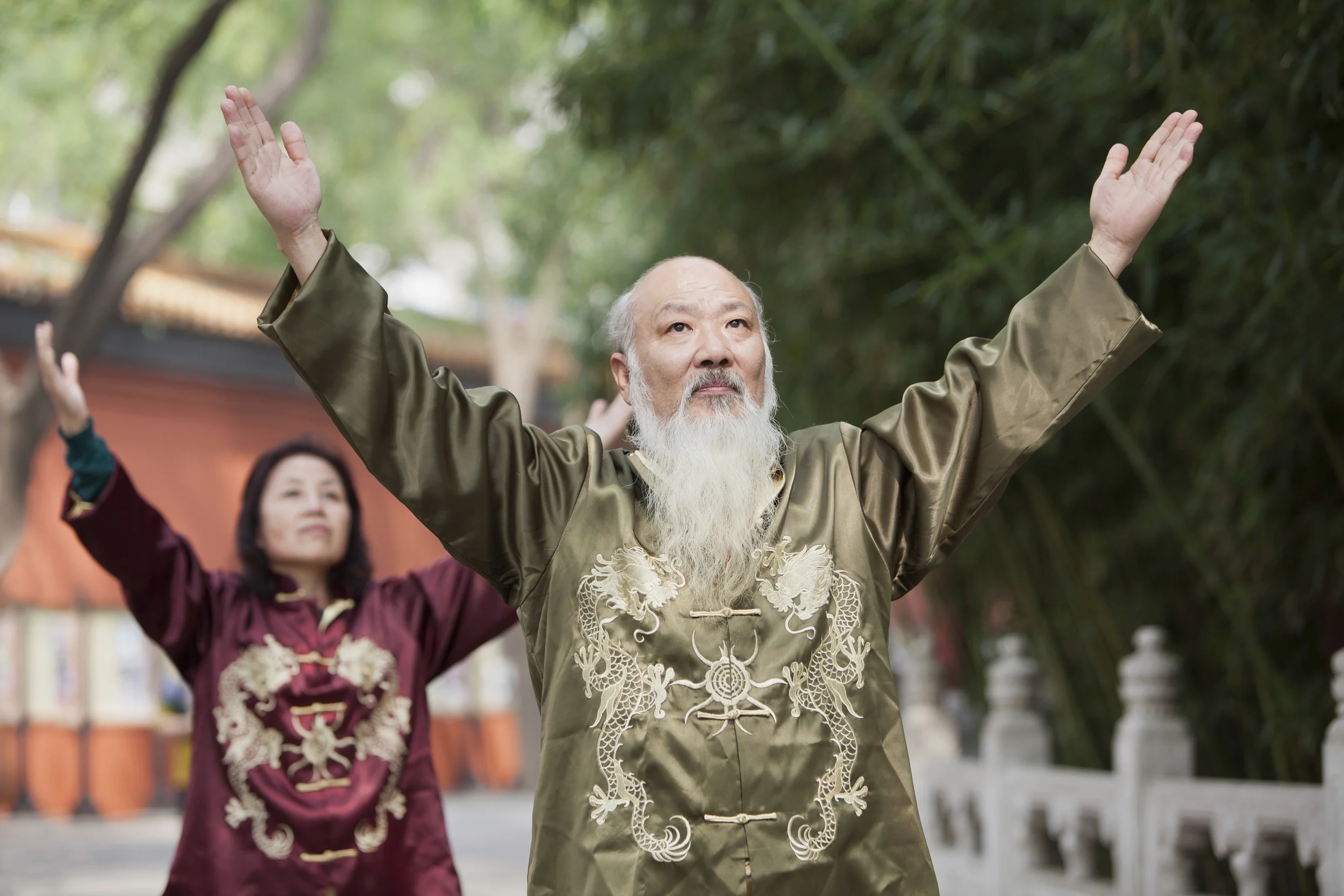Introduction and Brief History
Qigong consists of two words: qi (energy) and gong (skill). Taken together these words suggest a practice oriented towards regulating physiology. And, in fact, qigong is just such an exercise. It consists of gentle movements alternating with some periods of stillness. There are hundreds of styles but they all aim to integrate body movement, breath and thought leading to improved health.
The roots of qigong reach back five thousand years to ancient China. This form originated primarily from early attempts to preserve health and prevent illness. Over the centuries, it evolved as part of Traditional Chinese Medicine. In modern times, western research has validated many of its medical benefits. So much so that this approach is now called Chinese Medical Qigong, a branch of medicine that receives government sponsorship and much research.
Although qigong had some relation to ancient shamanism, it was first clearly applied for spiritual pursuits in the form of Daoist Qigong which can be traced back to the Qin dynasty (about 220 B.C.E.). The Dao De Jing written during this period laid the foundation for this form of qigong. The aim of Daoist Qigong is the cultivation of health, longevity and spirituality. The most famous exercise from this approach is known in the west as the microcosmic orbit and is a circulation of qi along the midline of both the front and back of the body.
Basic Principles
From the foregoing, you can see that whatever the aim of qigong practice--whether it tends toward self-help or medical therapy or spiritual and personal development--the practice always includes cultivation of health. This follows because the body is essentially an electromagnetic field with some chemistry thrown in to keep the whole story interesting. Scientists are now learning that many physiological processes in the body and mind are in fact regulated by electromagnetic processes. Qigong exercises provide a simple, hands-on way to harmonize these electric fields without the need of fancy computers or electronic gizmos.
You can think of it this way: you have an electric field about your body that becomes more and less organized (neat and tidy) depending upon your mood and state of health. This works both ways. Upset feelings or tummy can cause a messy electric field but vice-versa, the field, if disorganized for some reason (for instance, prolonged exposure to florescent lights), can disrupt normal health and function of your body and even your feelings and thoughts. So, a way to circumvent this in large measure is to practice qigong. It is like you are a big shaggy dog and the electric field about your body is all that fluffy and long stringy hair. If the doggy has just had a bath and had all the tangles combed out of her or his fur then all is well. This is like you doing the qigong exercises which usually entail simple movements of the arms and hands around the body. The hands have the most electrical charge in the body so a qigong exercise is akin to combing out the shaggy dog's messy hair.
Qigong foundations
interested in learning or experiencing more?
Qigong Consultation
A session oriented toward your questions about qigong and energy medicine. Guidelines for practice and detailed instruction included. Learn how to really sense and activate qi for healing, personal growth and spiritual development. The consultation can be used to develop a new qigong practice for you or to tailor your current routine to better fit your current needs whether for health, prosperity or other goals. A great opportunity to learn from a master practitioner!
qigong treatment
Qigong and spiritual healing for any medical condition, personal goal or life situation. Suggested treatment consists of two forty-five minute sessions spaced over a period of two to four weeks. You can receive treatment either in person at the clinic or at a distance so no visit is required. Both forms of healing are part of traditional Chinese qigong therapy and can be very helpful for restoring and improving your health.








